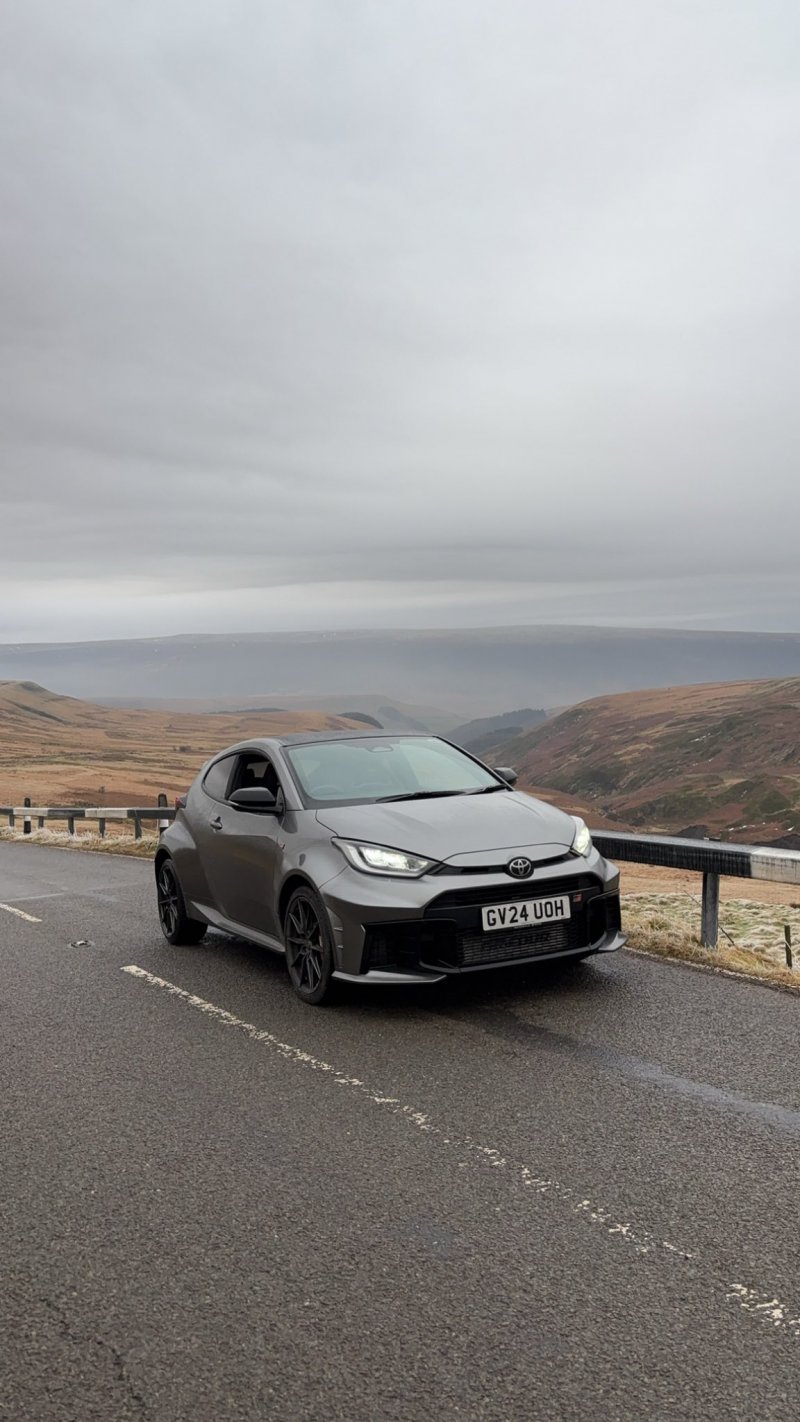YOU wouldn’t necessarily associate the Toyota Yaris with ever being the epitome of cool but take a peek at the classifieds and you’ll see something scarcely believable.
The GR Yaris shocked the world when it arrived and, four years later, there are several reasons why early examples are still fetching £30,000 and that’s because it’s massively special.
It’s arguably the car that completely transformed the once-ailing manufacturer’s fortunes, when you take a moment to think about it. After the halcyon years of the Supra and Celica, the GT86 - although I personally loved it - wasn’t ever really adored by other journalists who bemoaned its compromised, hard-riding set-up and lack of grunt.
The GR was not just a huge risk but an utter anomaly, too: four-wheel-drive, rally heritage, 60mm wider than the grandma favourite Yaris, a massively enticing spec sheet and it cost little more than £30,000 - its brilliance is why used examples still fetch a similar amount. It was a true performance car hero.
I’ll be honest: I never really gelled with the original as much as others did, but that was undoubtedly because I’d been bowled over by the Honda Civic Type R a week prior. I thought the GR - as impressive as it was in isolation - lost points in every aspect against its main rival, apart from its traction. On my favourite stretches of tricky tarmac I felt it was oddly aloof off-centre and, although undeniably special, it lacked that razor-sharp edge.
However, the newly-revised version - despite its similar look - is much more expensive at £45,000. For that you get 20bhp more, taking its total output to 280bhp, a few sportier styling touches but little else for the extra outlay at the outset, in truth, other than a semi-automatic gearbox which wasn’t an option on the first-generation car.
Delve a little deeper into its spec sheet and viewable additions include a 50mm lower dash, 25mm lower seats and a digital dash, but it’s most certainly a case of ‘if it ain’t broke, don’t fix it’ with the new GR - it’s received ever-so-slight tweaks here and there, some cosmetic but most under the surface.
There’s more chassis bonding and spot welds to increase its rigidity, mainly, while its suspension and spring rates have also been adjusted accordingly to allow the work underneath to shine.
The driver’s seat is comfortable yet supportive and although the interior is perhaps a tad underwhelming - even with the revisions - all it takes is your eyes to dart to the wing mirrors to heighten one’s excitement as they’re met by those enormous hips.
Start it up and there’s a rough, typically three-cylinder sound - one which, at first, doesn’t really befit the GR’s spectacular curves. However, select ‘D’ and right from the off it’s clear all the work that’s gone into firming up the ‘new’ GR has paid off. The steering feel - through my hands at least - feels transformed, especially in that awkward off-centre area which felt somewhat synthetic.
Such a simple change does nothing but instil confidence; the old car’s tendency to roll has been eradicated and that means you’re inspired to attack corners harder, trust it and enjoy the whole process so much more than before. It’s composed and because of that it covers ground at an alarming rate, hauling out of corners with unbreakable traction whatever the weather.
It’s quick, too: although the 1.6-litre is a little breathless at the top of its rev range, there’s low-down poke and bags of effortless mid-range pace, meaning you’re never really fussed about seeing out that last 1,000rpm at the top - it’s done its best work long before that and so you change gear. Sixty comes up in just over five seconds, but its third-gear punch is utterly addictive and feels way more powerful than it actually is due to it only having to shift 1,200kg.
Whereas before when you could opt for the ‘Circuit Pack’ GR, Toyota’s ditched that this time round and instead focused more on reworking its settings. Curiosity instantly gets the better of me and I plump for the ‘Track’ differential mode, which varies the torque split between 60:40 and 30:70 for maximum impact when asked.
There’s something very special about threading the GR down a countryside lane. Everything a typical Yorkshire B-road can throw at you - undulations, wicked bumps, chassis-upsetting camber and those delicious second and third-gear corners - is gobbled up by the tenacious little Toyota’s Michelin Pilot Sport 4S tyres. You’re constantly in a cat-and-mouse game with it; you think you’ve asked too much yet it manages implausible tasks and dares you to try again with more gusto.
The gearbox, then. It’s a funny one: it works absolutely fine when left to its own devices and it can become a pleasant experience when you take control, but do so and you’re be yearning for better paddles. The shifters are oddly-shaped things and have been stolen from the shared parts bin with Lexus, so they’re neither here nor there. They don’t feel sporty in your hands and it’d be so much better if more attention had been paid to them, given they’re your only way of being involved in the process. However, the gearbox as a whole isn’t a drawback as it’s fast-acting in its manual mode and perfectly acceptable when left alone, but a manual would still be my choice without even sampling it.
So, is it really £10,000 better than its predecessor? That’s a very hard one to answer and it’s more a representation of the world we’re currently a part of - it’s not its or indeed Toyota’s fault why it’s considerably dearer these days, but in isolation, it’s much superior purely because most of the original car’s foibles have been ironed out without ever losing any of its riotous magic.
Please, Toyota. Can I have one with a manual? Your new GR Yaris is a masterpiece.



























